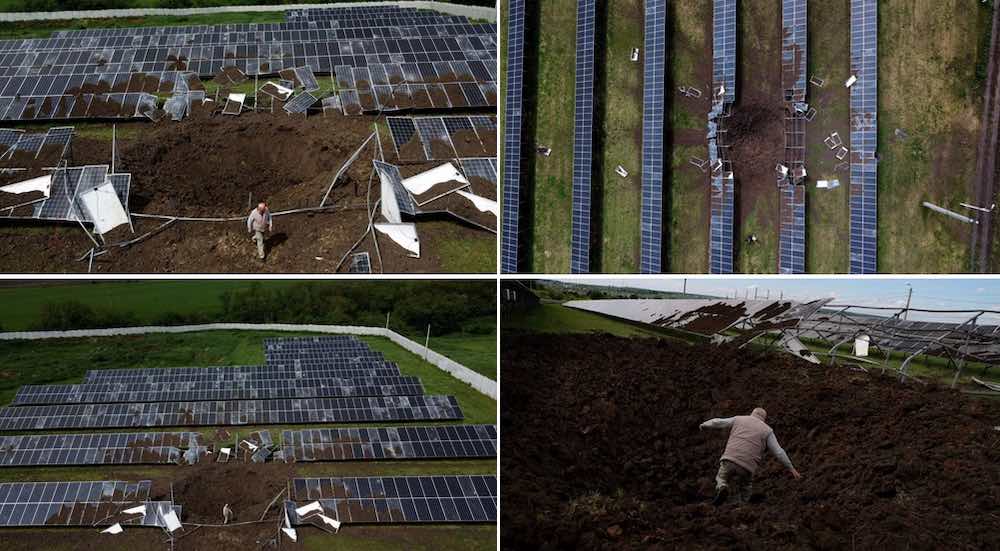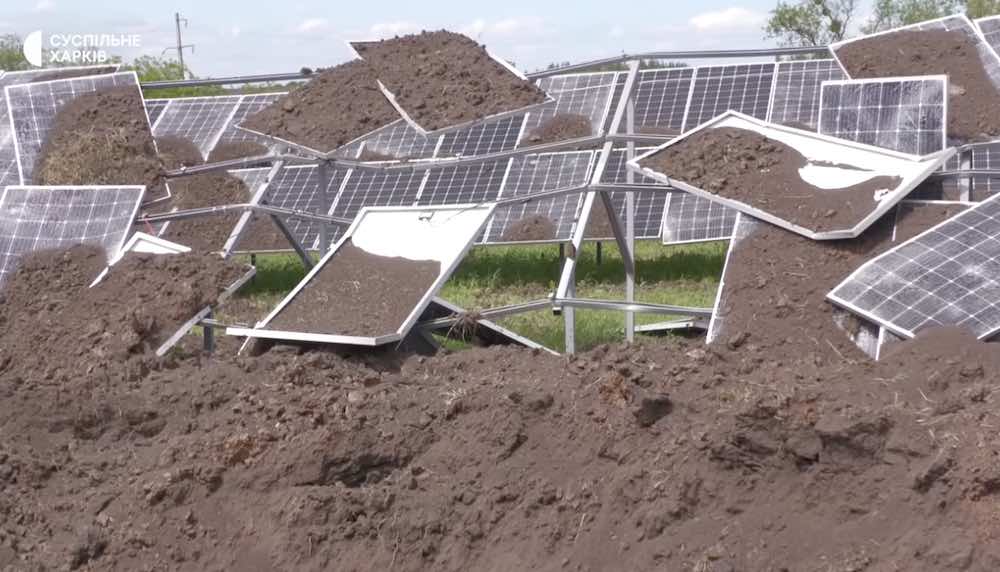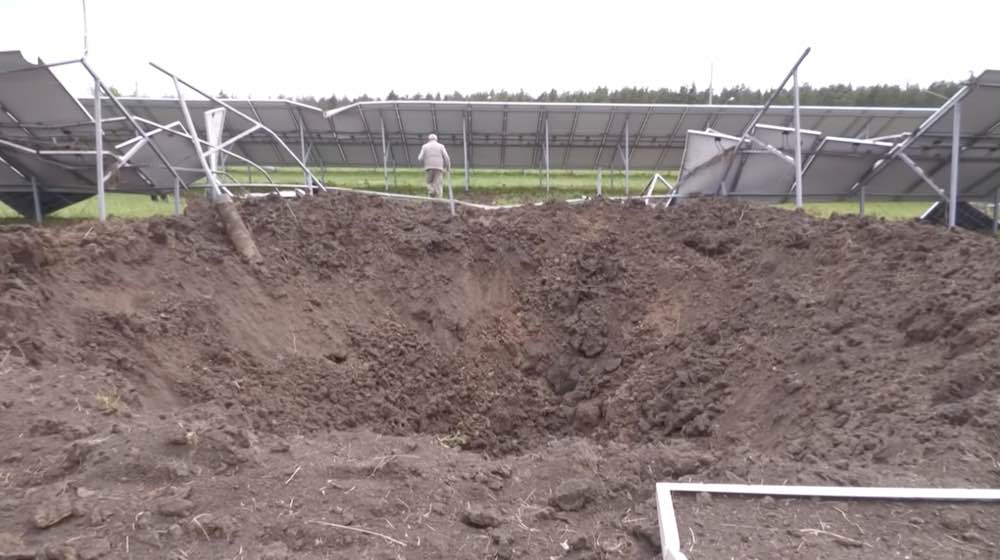The safety of Ukraine’s many nuclear power plants has been a focus of major concern during the ongoing Russian invasion, but photos and video making the rounds on social media this week show that renewables, too, have come under attack.
The images, some of them shared above, show a solar farm in eastern Ukraine’s Kharkiv region that was struck by a missile over the weekend, leaving hundreds of smashed panels and a massive crater between two module rows.
According to Reuters via the New York Times, the 10MW solar plant is located in Merefa, southwest of Kharkiv.
Video footage of the attack as it happened has been shared on Twitter by Deutsche Welle, which says there were no casualties from that particular attack, although Ukranian officials say Russian bombs killed at least seven civilians in Karkhiv over the past week.
A missile strike on a solar plant in Ukraine’s Kharkiv region left a large crater.
The plant manager wants to know why it was hit. There are “no military objects here,” he says. pic.twitter.com/vUAPyW2HGz
— DW News (@dwnews) May 30, 2022
DW shows an interview with the manager of the solar farm, Volodymyr Ranchkovskyi (Reuters names him as Vladimir Mihailovich) – pictured below standing in the crater left by the bomb – who says he believes the attack was targeted, despite the solar farm being a “completely peaceful object” with no connected military infrastructure.
The DW report also notes that power generation from the plant has since been restored. This has not been verified by the plant’s owner.
Whether the solar farm was the intended target of the Russian bomb is difficult to confirm, but Kirill Trokhin, who works in the power generation industry and is based in Kyiv, said on LinkedIn that the minimal “fallout” – so to speak – from the attack on the PV plant offers yet another very good reason to shift to renewables.
“A Russian bomb hits a photovoltaic solar power plant in eastern Ukraine. As we can see, it does not burn, it is not completely destroyed, and the cumulative destruction can be eliminated in a couple of days if spare materials are available,” Trokhin writes on LinkedIn alongside some of the images being shared.
“And if not – the damaged section can be localised in a day, so as not to affect the operation of the survived equipment.
“Judging by the photo, about four strings were destroyed and four more were damaged, approximately. This is about 200 modules. For a 10MW plant, this is approximately 0.6%. Yes, less than a percent.
“This is another reason to focus on distributed renewable generation if the climatic reason is not enough. To destroy it – you need to try very hard.
“Of course, Russians can hit into substations. But all the same, the resumption of work will happen much faster than when the technological equipment of thermal power plants, hydroelectric power plants, or nuclear power plants is destroyed. And single losses are much less.”
Trokhin – who RenewEconomy communicated with over LinkedIn and who says he, himself, is currently safe – stressed that damage to Ukraine’s PV plants was nothing in comparison to human injuries and deaths.
But he also hopes that “the Ukrainian experience of the loss of generating capacities and the emergence of a fuel crisis will change the attitude of the governments of many countries towards the development strategy of distributed energy sources.”
Images used in this story are screen shots taken from local TV report, here.











